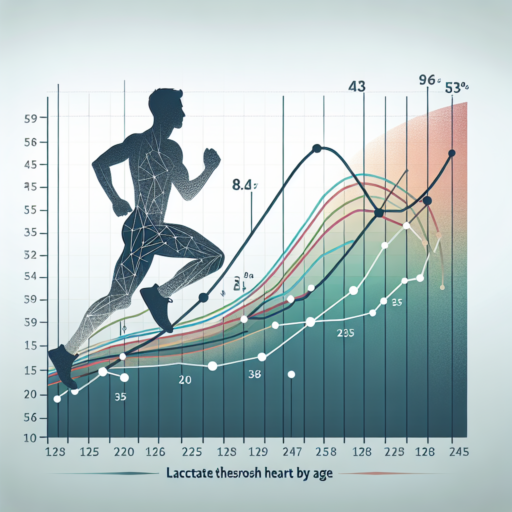Understanding Heart Rate Readings: What They Mean for You
Monitoring your heart rate is not just for athletes. It offers vital insights into your overall health and fitness levels, guiding you towards a healthier lifestyle. When you check your heart rate, you’re essentially measuring how hard your heart is working. This can tell you a lot about your cardiovascular health and help you tailor your fitness regime to better suit your body’s needs. Whether it’s resting heart rate or during intense workouts, each reading has its significance.
For the majority of adults, a normal resting heart rate ranges from 60 to 100 beats per minute (bpm). However, athletes or those with higher levels of physical fitness might have a resting heart rate below 60 bpm, indicating a more efficient heart function. Understanding these numbers can provide insights into your heart’s efficiency and endurance, helping you to track improvements or recognize when it might be time to see a healthcare provider.
Beyond resting heart rate, it’s also crucial to understand your heart rate during physical activity. This is where the concept of target heart rate zones comes into play. These zones are percentages of your maximum heart rate—the highest rate your heart can achieve during maximum exertion. Staying within these zones can optimize your workouts, ensuring you’re exercising at an intensity level that’s effective yet safe. By monitoring your heart rate readings within these contexts, you can substantially boost your cardiorespiratory fitness and overall health.
How to Accurately Measure Your Heart Rate
Measuring your heart rate accurately is crucial for monitoring your fitness levels, detecting health issues early, and tailoring your workout regimen to your body’s needs. Whether you’re an athlete looking to optimize your performance or someone interested in maintaining a healthy lifestyle, understanding how to measure your heart rate correctly is key.
To start, find a quiet place where you can sit or lie down comfortably. You’ll need to locate your pulse, which can be found on your wrist, inside your elbow, the side of your neck, or the top of your foot. The most common sites for measuring heart rate are the radial artery on the wrist and the carotid artery on the neck. Gently place your index and middle fingers over one of these areas. Avoid using your thumb as it has its own pulse, which might interfere with your measurement.
Steps for Measuring Your Heart Rate
- Ensure you are relaxed and have not performed any strenuous activity for at least 10 minutes as this can affect the reading.
- Position your fingers over your pulse site: either the radial artery on the wrist or the carotid artery on the neck.
- Count the number of beats in 30 seconds and multiply by two to get your heart rate in beats per minute (BPM). For a more accurate reading, count for a full minute.
This simple yet effective method can help you keep track of your heart health and adjust your physical activities for better health outcomes. Not only does knowing how to measure your heart rate empower you with valuable health insights, but it also guides you in making informed decisions about your overall wellness journey.
The Importance of Monitoring Your Heart Rate
Monitoring your heart rate is crucial for understanding your cardiovascular health and overall well-being. Your heart rate can provide vital clues about your fitness level, heart health, and even signal potential health issues before they become serious. By keeping an eye on this simple metric, individuals can make informed decisions about their exercise routines, stress management, and lifestyle choices.
Identifying Zones for Optimal Performance: Athletes and fitness enthusiasts often use heart rate monitoring to ensure they are exercising within the right intensity zones. Whether the goal is fat burning, endurance training, or high-intensity interval training, understanding your heart rate can guide your efforts towards more effective workouts. This strategy helps in maximizing the benefits of physical activity without overexerting the heart.
Early Detection of Health Issues: An irregular heartbeat or unusual changes in heart rate patterns can be early indicators of health concerns such as arrhythmias, heart disease, or other conditions. Regular monitoring allows for the early detection of such anomalies, enabling timely medical consultation and intervention. This proactive approach can be lifesaving, highlighting the significance of incorporating heart rate monitoring into your daily routine.
No se han encontrado productos.
Interpreting Your Heart Rate: The Normal Ranges
Understanding your heart rate is crucial for monitoring your cardiovascular health. The term «normal» can vary significantly depending on several factors such as age, fitness level, and even the time of day. However, general guidelines can help you determine if your heart rate falls within a healthy range.
What Constitutes a Normal Heart Rate?
The average resting heart rate for adults ranges from 60 to 100 beats per minute (bpm). Athletes in top condition may see resting rates as low as 40 bpm. It’s important to recognize that a lower resting heart rate typically indicates more efficient heart function and better cardiovascular fitness. For children, the normal ranges are quite different, often sitting between 70 and 100 bpm for those aged 6 to 15 years.
Factors Influencing Heart Rate
Several external and internal factors can influence your heart rate, including temperature, stress levels, and physical activity. Emotional states can also lead to transient increases in heart rate. Therefore, when checking your heart rate, ensure you are relaxed and have been resting for at least 5 minutes to obtain an accurate reading.
Your heart rate is a vital sign of your overall health and fitness. By keeping track of it and knowing what’s normal for you, you can gain insights into your heart health and catch potential issues before they become serious. Regular monitoring is advantageous, especially if you’re engaging in a new fitness regimen or have underlying health concerns.
Factors That Can Affect Heart Rate Readings
Understanding the various factors that can impact heart rate readings is crucial for anyone looking to get accurate and consistent results. Whether you’re an athlete monitoring your performance, a patient tracking health conditions, or simply a fitness enthusiast, being aware of these elements can help you interpret your readings with greater clarity.
Physical Activity and Fitness Level
One of the most apparent factors affecting heart rate readings is the level of physical activity. During exercise, the heart rate increases to supply the muscles with more oxygen-rich blood, leading to higher readings. Conversely, periods of rest or inactivity will result in lower heart rate readings. Additionally, individuals with higher fitness levels often have a lower resting heart rate due to their heart’s efficiency in pumping blood.
Stress and Emotional State
Emotions and stress significantly influence heart rate, often overlooked in standard considerations. When a person experiences stress or intense emotions, such as anxiety or excitement, the body releases adrenaline, causing an increase in heart rate. This physiological response can alter heart rate readings, making it essential to consider one’s emotional state when evaluating heart rate data.
Environmental Factors and Health Conditions
Various environmental and health-related conditions can also affect heart rate readings. High temperatures and humidity can lead to an increase in heart rate as the body works harder to cool itself. Moreover, certain medical conditions, including arrhythmias or thyroid diseases, and the use of medications such as beta-blockers, can significantly alter heart rate. It’s important for individuals with underlying health issues to take these factors into account when monitoring their heart rate.
Using Heart Rate Readings to Improve Your Fitness
Tracking your heart rate is a scientifically validated method to gauge the effectiveness of your fitness regimen. By monitoring your heart rate, you can optimize your workouts to ensure that you are exercising within the correct intensity level for maximum benefit. It’s not just about working harder, but smarter, using your heart rate as a guide to finding the sweet spot in your training.
Understanding the Heart Rate Zones is crucial for leveraging heart rate readings for fitness improvement. Generally, these zones range from very light intensity, ideal for warm-ups, to maximum effort, which should be reached sparingly. Each zone targets different fitness objectives, from fat burning to improving aerobic or anaerobic capacity. Knowledge of these zones allows you to structure your workout routine to align more closely with your fitness goals, making each session more effective.
Integrating heart rate monitoring into your fitness routine need not be complicated. Start with wearing a reliable heart rate monitor during your workouts. Pay attention to how your heart rate corresponds to the effort you’re exerting. Over time, you’ll be able to intuitively understand what feels like light exertion versus a high-intensity effort. This awareness is key in preventing undertraining or overtraining, helping you to maintain a balanced approach to your fitness journey.
Smart Devices and Apps for Tracking Your Heart Rate
In today’s fast-paced world, keeping track of your heart rate has become crucial for both fitness enthusiasts and individuals concerned about their health. With the advent of smart devices and apps, monitoring your heart rate has never been easier or more accessible. These advanced tools offer real-time data, giving you the insights needed to adjust your lifestyle, workout routines, and even detect potential health issues early on.
Smartwatches and fitness trackers are at the forefront of this technology, equipped with sensors that continuously measure your heart rate throughout the day. Brands like Apple, Garmin, and Fitbit offer devices that not only track your heart rate but also analyze trends and patterns over time. This information can be crucial for understanding your body’s responses to different stressors, physical activities, and rest periods. The convenience of having these metrics available on your wrist cannot be understated, providing feedback that is both instantaneous and historical.
On the software side, dedicated heart rate monitoring apps play a significant role in tracking and analyzing heart rate data. Apps such as HeartRate+ Coherence and Cardiogram utilize the sensors in your smartphone or connected device to offer detailed analyses of your heart rate variability (HRV), resting heart rate, and more. These apps often come with features like setting heart rate zones, which can be particularly useful for athletes looking to optimize their training regimes or individuals aiming to improve cardiovascular health through targeted heart rate management.
Common Myths About Heart Rate Readings Debunked
Understanding heart rate readings is crucial for both fitness enthusiasts and people interested in maintaining their overall health. However, several myths surround these readings, leading to misconceptions and inaccurate health measures. In this section, we’ll debunk some of the most common myths to ensure you have the correct information moving forward.
Myth #1: A Lower Heart Rate Always Indicates Better Fitness
One of the widespread myths is that a lower heart rate is always a marker of superior fitness. While it’s true that athletes and physically active individuals often have a lower resting heart rate due to better cardiovascular efficiency, this isn’t a universal rule. Factors such as genetics, medication, and even sleep quality can influence your heart rate. It’s essential to understand that a “normal” resting heart rate can range from 60 to 100 beats per minute, with variations within this range not necessarily indicating poor fitness.
Myth #2: A High Heart Rate Means You’re Overexerting Yourself
Another common misunderstanding is the idea that if your heart rate is high during exercise, you’re pushing yourself too hard. While it’s valuable to monitor your heart rate to avoid overtraining, a higher heart rate can also be influenced by factors such as dehydration, stress, and environmental conditions. It’s important to use heart rate zones tailored to your individual fitness level and goals to guide your training intensity, rather than adhering to a one-size-fits-all number.
If you’re invested in understanding and utilizing heart rate readings to enhance your health or fitness journey, it’s crucial to look beyond these myths. Armed with accurate information, you can tailor your approach to fitness and wellness in a way that truly benefits your personal health profile.
When to Consult a Doctor About Your Heart Rate Readings
Understanding your heart rate readings is crucial for maintaining cardiovascular health, but it’s not always clear when to consult a medical professional. Recognizing the signs that indicate a need for professional advice can help in early detection and prevention of potential health issues. Generally, you should consider seeking medical attention if you experience significant and sudden changes in your heart rate.
Symptoms Indicating a Need for Consultation
Several symptoms related to heart rate deviations can signal an underlying problem. These include a resting heart rate consistently above 100 beats per minute (tachycardia) or below 60 beats per minute (bradycardia) without being a trained athlete. Additionally, episodes of heart palpitations, characterized by irregular heartbeats that feel rapid, fluttering, or pounding, should prompt a visit to the doctor. Another concerning sign is experiencing dizziness, shortness of breath, or fainting spells (syncope) in conjunction with abnormal heart rate readings.
Factors Influencing Urgency
The urgency of consulting a doctor can vary depending on additional factors such as your age, overall health condition, and any existing cardiovascular risks or diseases. For individuals with a history of heart disease, diabetes, high cholesterol, or high blood pressure, even slight changes in heart rate readings can merit prompt medical attention. Moreover, lifestyle factors, including stress levels and physical activity, can impact the urgency of consulting a healthcare provider.
It’s important to document your heart rate readings accurately and share this information with your healthcare provider. Doing so can assist in diagnosing potential issues early and tailor a treatment plan that suits your specific health needs. Remember, early intervention is key to managing heart health effectively.
Tips for Maintaining a Healthy Heart Rate
Maintaining a healthy heart rate is crucial for overall health and well-being. A normal heart rate ensures that your body is efficiently pumping blood, thus supplying your organs and tissues with the oxygen and nutrients they need. Below are essential tips designed to help you keep your heart beating at a pace that’s right for you.
Engage in Regular Physical Activity
Exercise is a powerhouse when it comes to supporting heart health. Engaging in at least 150 minutes of moderate-intensity aerobic exercise or 75 minutes of vigorous exercise each week can help strengthen your heart and improve its efficiency. Activities like walking, cycling, or swimming not only aid in maintaining a healthy heart rate but also contribute to the overall fitness of your cardiovascular system. Remember, consistency is key, so find an activity you enjoy and stick with it.
Eat a Heart-healthy Diet
A balanced diet plays a significant role in heart health. Focusing on foods that are low in saturated fats, cholesterol, and sodium while high in fruits, vegetables, whole grains, and lean proteins can help manage your heart rate and reduce the risk of heart disease. Incorporate omega-3 fatty acids found in fish like salmon and trout, as well as in flaxseeds and walnuts, to support heart health. Additionally, staying hydrated and limiting caffeine and alcohol intake can also positively affect your heart rate.
Monitor Your Heart Rate
Keeping an eye on your heart rate can empower you to make informed decisions about your health. Nowadays, many smartphones and wearable devices are equipped with heart rate monitors, making it easier than ever to track your pulse. Understanding what is normal for you and recognizing any unusual changes in your heart rate can prompt you to take necessary actions or seek medical advice promptly. Monitoring your response to different activities and stressors can also guide adjustments to your lifestyle for better heart rate management.




